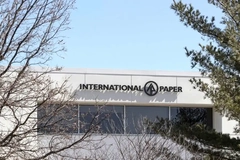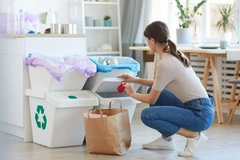Plastics Recyclers Europe warns waste collection failures could threaten EU circular economy

16 Jun 2022 --- Plastics recyclers in Europe are experiencing shortages of sorted plastic waste, which the recycling sector is warning could slow down the transition toward a circular plastics economy in the EU.
Plastics Recyclers Europe (PRE), an organization representing European plastics recyclers, is calling for investment in robust sorting and collection infrastructure to increase stable feedstocks for European recyclers.
“Recent EU policy and global developments have boosted massive investments in the plastic recycling capacities on the continent. In 2020, the plastic recycling industry invested €1.5 billion (US$1.56 billion), which translates into 1.1 Mt additional installed capacity when compared to the previous year, and a total of €4.9 billion (US$5 billion) of investments since 2017,” explains Ton Emans, PRE’s president.
“However, without stable, high-quality input materials, the industry’s efforts to reach the new recycling targets might be hindered. Robust sorting and collection infrastructure is a must to increase stable feedstocks for European recyclers.”
Meanwhile, packaging suppliers can help drive the transition to a circular plastics economy with recycle-by-design packaging solutions.
“Design for recycling stands as an essential measure to accomplish circular life for plastics and contributes toward diverting plastics away from landfills and incineration plants, ultimately contributing to achieve higher recycling targets while saving natural resources,” Emans tells PackagingInsights.
“Recyclability leads to a more efficient recycling process, higher quality of recycled material, and eventually enables its uptake in a wide range of high-value beyond-the-niche products.” EU plastic waste exports dropped significantly after China banned imports in 2018, but European recyclers still face sorted plastic waste shortages.
EU plastic waste exports dropped significantly after China banned imports in 2018, but European recyclers still face sorted plastic waste shortages.
Unexpected developments
The low available volumes of sorted plastic have surprised the recycling sector given that the EU has registered a decline in waste exports over the past few years. Moreover, recyclers have upscaled their installed capacities with 60% growth in 4 years, notes PRE.
The organization adds that China’s ban on plastic waste imports in 2018, which resulted in one of the biggest drops of plastic waste exports outside of the EU in the same year, and the strengthening of the controls in the context of the Basel Convention and OECD Decision on Transboundary Movements of Waste, enabled the continuous decrease of exported waste from 3 Mt in 2014 to 1 Mt in 2021.
Despite these developments and regardless of the increase in the price of sorted material pushed by the growing prices of recycled materials, no substantial additional quantities of waste are being sent to recyclers today, says PRE.
With 9 Mt tons of plastic waste being collected for sorting out of 30 Mt in total, the organization stresses that increasing the collection destined for recycling remains one of the key measures in Europe. The remainder of the collected waste (21 Mt) is either incinerated or landfilled.
Mind the gap
Furthermore, the statistics demonstrate a 20 Mt gap in the amount of waste generated versus what is put on the market, highlights PRE.
Challenging these figures is critical to diverting recyclable plastic from landfills and incinerators to create economies of scale for recycled polymers. The organization calls for transparent reporting on waste generation, collection and sorting to ensure missed quantities can be identified and recycled. Packaging like yogurt pots reportedly accounts for over 60% of EU plastic waste.
Packaging like yogurt pots reportedly accounts for over 60% of EU plastic waste.
Circular economy dreams
The European Commission adopted the plastics strategy in 2018, which included updating the 1994 Packaging and Packaging Waste Directive and doubling the current recycling target to 50% by 2025 and 55% by 2030.
In 2020, the European Court of Auditors warned there is a significant risk the EU will not meet its plastic packaging recycling targets, highlighting that new and more accurate recycling reporting rules and a tightening of plastic waste export regulations will reduce the EU’s reported recycling rate.
Packaging, such as yogurt pots and water bottles, reportedly accounts for around 40% of plastic use and over 60% of plastic waste generated in the EU. It is also the type of packaging with the lowest recycling rate in the EU (slightly over 40%).
PET problems
In May, the European beverage industry urged EU decision-makers to create the “right” enabling policy framework to help accelerate the transition to a circular economy, including “priority access” to recycled PET supply. The request was made amid growing concerns that other industries, like textiles and automotive, are dipping into the recycled plastic supply without adequately contributing to its availability.
“While the installed capacities are growing the collection must increase drastically for PET. The driving force for advancing both collection and recycling of PET (and all plastic waste in general), nonetheless, is the legislative framework and specifically the EU Single Use Plastics Directive, which introduces targets for both collection and recycled material uptake,” continues Emans.
“Moving toward circular plastic products requires, additionally, transparency and trust in the use of recycled plastic. The industry will need to work on implementing standards and harmonization to boost trust in recycled materials. This trust can be achieved with a framework of harmonized European standards and certification schemes.”
“Clear, transparent messaging is key in signaling the environmental sustainability of products and safeguarding the end consumer’s trust, requiring a robust, pan-EU methodology to verify and certify these claims,” he concludes.
By Joshua Poole











